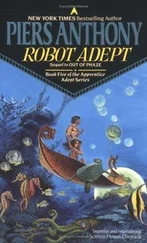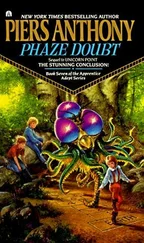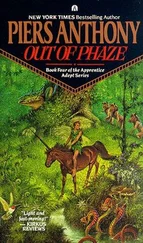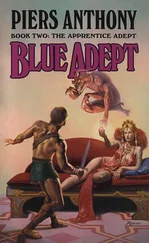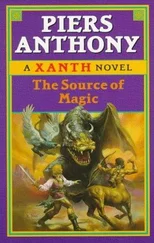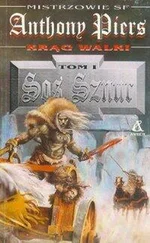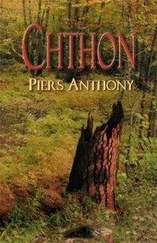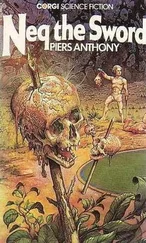Piers Anthony - Split Infinity
Здесь есть возможность читать онлайн «Piers Anthony - Split Infinity» весь текст электронной книги совершенно бесплатно (целиком полную версию без сокращений). В некоторых случаях можно слушать аудио, скачать через торрент в формате fb2 и присутствует краткое содержание. Год выпуска: 2011, Жанр: Фэнтези, на английском языке. Описание произведения, (предисловие) а так же отзывы посетителей доступны на портале библиотеки ЛибКат.
- Название:Split Infinity
- Автор:
- Жанр:
- Год:2011
- ISBN:нет данных
- Рейтинг книги:5 / 5. Голосов: 1
-
Избранное:Добавить в избранное
- Отзывы:
-
Ваша оценка:
- 100
- 1
- 2
- 3
- 4
- 5
Split Infinity: краткое содержание, описание и аннотация
Предлагаем к чтению аннотацию, описание, краткое содержание или предисловие (зависит от того, что написал сам автор книги «Split Infinity»). Если вы не нашли необходимую информацию о книге — напишите в комментариях, мы постараемся отыскать её.
Split Infinity — читать онлайн бесплатно полную книгу (весь текст) целиком
Ниже представлен текст книги, разбитый по страницам. Система сохранения места последней прочитанной страницы, позволяет с удобством читать онлайн бесплатно книгу «Split Infinity», без необходимости каждый раз заново искать на чём Вы остановились. Поставьте закладку, и сможете в любой момент перейти на страницу, на которой закончили чтение.
Интервал:
Закладка:
She snorted again. Round three was over. Round four was coming up. How many more tricks did this phenomenal animal have? Stile was in one sense enjoying this challenge, but in another sense he was afraid. This was no Proton Game, where the loser suffered no more than loss of status; this was his life on the line. The first trick he missed would be the last.
Neysa came onto a grassy plain. Now she accelerated. What was she up to this time? It didn’t seem so bad—and that made him nervous. Beginning with a walk, she accelerated to a slow trot. The speed differential was not great, as a slow trot could be slower than a brisk walk. In fact. Stile had worked with lazy horses who could trot one meter per second, rather than the normal three or four meters per second. The distinguishing mark was the beat and pattern. In walking, the horse put down the four feet in order, left-front, right-rear, right-front, left-rear, four beats per cycle. Trotting was two-beat: left-front and right-rear together, followed by right-front and left-rear together. Or with a right lead instead of a left. The point was that the motion of each front foot was synchronous with one hind foot; in some cases the front and rear moved together on the same side. But there were only two beats per cycle, the pairs of feet striking the ground cleanly together. It made for a bumpy but regular ride that covered the ground well, and looked very pretty from the side. A slow trot could be gentle; a fast one could be like a jackhammer. But a trot was definitely a trot, at any speed; there was no mistaking it. Stile liked trot-ting, but distrusted this one. He knew he had not seen the last of this mare’s devices.
Next she broke into a canter: three-beat. Left-front, then right-front and left-rear together, and finally right-rear. Like a cross between a walk and a trot, and the ride a kind of gentle swooping. All perfectly conventional, and therefore not to be trusted. She had some-thing horrendous in her canny equine mind!
Finally she reached a full gallop: a modified two-beat cycle, the two front legs striking almost but not quite together, then the rear two. A four-beat cycle, technically, but not uniform. Beat-beat, beat-beat, at the velocity of racing. Stile enjoyed it; he experienced an exhilaration of speed that was special on a horse—unicorn. Motored wheels could go much faster, of course, but it wasn’t the same. Here, as it were in the top gear, the animal straining to the limit—though this one was not straining, but loafing at a velocity that would have had another one straining—
The unicorn shifted into another gait. It was a five-beat—
Stile was so surprised he almost dropped off. No horse had a five-beat gait! There were only four feet!
No horse—there he was again. He kept forgetting and getting reminded in awkward ways. This gait was awful; he had never before experienced it, and could not accommodate it. BEAT-beat-BEAT-BEAT-beat, and over again, bouncing him in a growing resonance, causing him to lose not his grip but his composure. He felt like a novice again, fouling himself up, his efforts to compensate for the animal’s motions only making it worse. As a harmonic vibration could shake apart a building, this fifth-beat was destroying him. He would fall—and at this breakneck velocity he could . . . break his neck.
Think, Stile, think! he told himself desperately.
Analyze: What is the key to this gait?
His hands were hurting as his clutch on the unicorn’s mane slowly slipped. His thigh muscles were beginning to cramp. Stile was expert—but this creature had his number now. Unless he could get her number too, soon.
Four feet, five beats. One foot had to repeat. Number the steps: one-two-three-four—where was the repeat? Fingers slipping...
BEAT-beat—that sound was less than the others, like a half-step. But half a step had to be completed by—another half-step. Like a man catching his balance when tripped. Two half-steps—that was it. Not necessarily together. The second and fifth. The right rear foot—as though stumbling, throwing off his timing. Compensate—
Stile started to catch on. He shifted his weight to absorb the shock and irregularity. BEAT-absorb-BEAT-BEAT-absorb. It was tricky and unnatural as hell, but his body was finding the dubious rhythm, get-ting the swing. Mostly it was his knowledge of the pattern, of what to expect. No more surprises! His leg muscles relaxed, and his hands stopped slipping.
Neysa felt the change, and knew he had surmounted this challenge too. She turned at speed—and Stile’s in- ertia almost flung him off her side. A gradual turn at high velocity could pack more wallop than a fast turn at low speed. But she had to shift to a normal gallop for the turn, and no equine living could dump Stile with a normal gallop.
Realizing her mistake, the unicorn changed tactics.
She slowed, then suddenly went into a one-beat gait. This was another surprise, in a ride full of them. It was like riding a pogo stick. All four of her feet landed together; then she leaped forward, front feet leading-only to contract to a single four-point landing again.
But Stile had ridden a pogo stick, in the course of his Game experience. He could handle this. “No luck, Neysa!” he cried. “Give up?”
She snorted derisively through her horn. It was al-most as if she understood his words. But of course horses were very perceptive of tone, and responsive to it.
She turned. She had been going north, having curved in the course of her running; now she bore due west. Round five was coming up.
The grass gave way to packed dirt, then to clay, then to something like shale, and finally to rock. Neysa’s hooves struck sparks from the surface, astonishing Stile. She was traveling fast, to be sure—faster than any horse he had raced. It felt like eighty kilometers per hour, but that had to be a distortion of his perception; such a speed would be of interworld championship level, for a horse. Regardless, hooves were not metallic; this animal was not shod, had no metal horseshoes, no nails. Nothing to strike sparks. Yet they were here.
Now she came to the pattern of crevices he had spied from the tree. They loomed with appalling suddenness: deep clefts in the rock whose bottoms could not be seen. Her hooves clicked between cracks unerringly, but Stile didn’t like this. Not at all! One misstep would drop a foot into one of those holes, and at this speed that would mean a broken leg, a tumble, and one man flying through the air to land—where? But all he could do was hang on.
The cracks became more plentiful, forming a treacherous lattice. His vision of the crevices blurred, because they were so close, passing so rapidly; they seemed to writhe in their channels, swelling and shrinking, now twisting as if about to burst free, now merging with others or splitting apart. He had noted a similar effect when riding the Game model train as a child, fixing his gaze on the neighboring tracks, letting them perform their animations as he traveled. But these were not rails, but crevices, getting worse.
Neysa danced across the lattice as Stile watched with increasing apprehension. Now these were no longer mere cracks in a surface; these were islands between gaps. Neysa was actually traversing a chasm, jumping across from stone to stone, each stone a platform rising vertically from the depths. Stile had never seen such a landscape before. He really was in a new world: new in kind as well as in region.
Now Neysa was leaping, using her one-beat gait to bound from one diminishing platform to another. Sometimes all four feet landed together, in a group, almost touching each other; sometimes they were apart, on separate islands. She was obviously conversant with this place, and knew where to place each hoof, as a child knew where to jump amid the squares of a hop-scotch game, proficient from long practice. Perhaps Neysa had mastered this challenge in order to avoid predators. No carnivore could match her maneuvers here, surely; the creature would inevitably misstep and fall between islands, perhaps prodded by the unicorn’s aggressive horn, and that would be the end. So her trick gait made sense: it was a survival mechanism. Probably the five-beat gait had a similar function. What terrain was it adapted to?
Читать дальшеИнтервал:
Закладка:
Похожие книги на «Split Infinity»
Представляем Вашему вниманию похожие книги на «Split Infinity» списком для выбора. Мы отобрали схожую по названию и смыслу литературу в надежде предоставить читателям больше вариантов отыскать новые, интересные, ещё непрочитанные произведения.
Обсуждение, отзывы о книге «Split Infinity» и просто собственные мнения читателей. Оставьте ваши комментарии, напишите, что Вы думаете о произведении, его смысле или главных героях. Укажите что конкретно понравилось, а что нет, и почему Вы так считаете.

